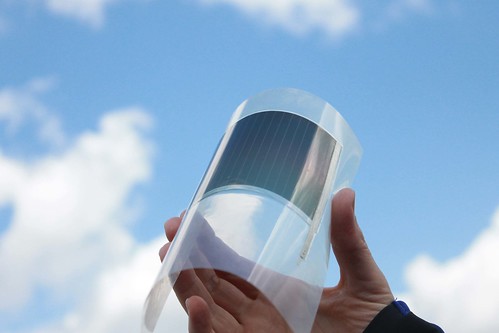European experts have developed new organic photovoltaic cells that, incorporated in the windows and glass facades of buildings and facilities, improve their energy efficiency thanks to their high level of transparency and energy collecting capabilities. This was one of the main innovations exhibited today in Barcelona as part of the ‘OPV Workshop: A new technology to market’, during which researchers have presented the latest technological developments in this field.
Organic photovoltaic cells (OPVs) are materials that are characterised by their lightness, their adaptability to different types of surface and, most importantly, by their transparency. This last quality makes them particularly suitable for installation in windows, glass facades and other architectural elements that facilitate the entry of light into buildings, because, unlike the existing opaque cells, in addition to capturing solar energy they also allow the passage of light into the interior with a uniform transparency.
The scientific round table included the presentation of the results of the Solprocel, Mujulima and Artesun research projects, funded by the 7th Framework Programme of the European Union, and focused on the production of new OPVs to improve performance in terms of energy absorption, durability and the reduction of production costs. In this context, a new transparent cell with photonic crystals, capable of adapting to the colour of the surface, was presented. This photovoltaic technology could prove extremely useful for the construction of sustainable buildings based on the self-consumption of energy, and also for improving the efficiency and reducing the bills of existing facilities with an intensive use of energy.
